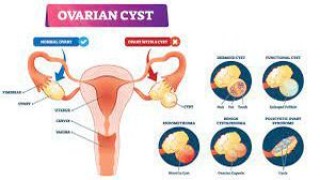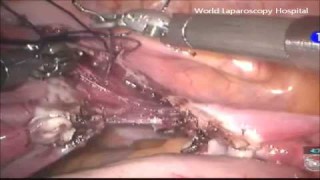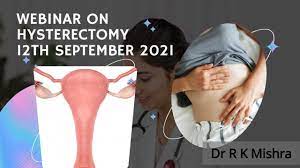Laparoscopic Ovarian Cystectomy: Minimally Invasive Removal of Dermoid Cysts
Add to
Share
1,657 views
Report
2 years ago
Description
Introduction: Dermoid cysts are common ovarian cysts that can develop from germ cells, which are the cells that give rise to eggs. These cysts contain a variety of tissues, including hair, skin, and even teeth. When a dermoid cyst causes symptoms or poses a risk of complications, surgical intervention may be necessary. Laparoscopic ovarian cystectomy, a minimally invasive surgical procedure, is often performed to remove dermoid cysts while preserving the ovary. In this article, we will delve into the details of laparoscopic ovarian cystectomy, its benefits, and considerations specifically for dermoid cysts. Understanding Dermoid Cysts: Dermoid cysts, also known as mature cystic teratomas, are typically benign ovarian growths that can occur in women of reproductive age. These cysts develop from germ cells, which are present in the ovary and have the potential to mature into various tissues. Dermoid cysts can range in size from small to large and may cause symptoms such as pelvic pain, discomfort, or distortion of the pelvic structures. Laparoscopic Ovarian Cystectomy: Laparoscopic ovarian cystectomy is a minimally invasive surgical procedure performed to remove ovarian cysts while preserving the healthy ovarian tissue. The procedure involves making several small incisions in the abdomen, through which specialized instruments and a laparoscope (a thin, lighted camera) are inserted. The laparoscope provides a clear view of the pelvic organs, allowing the surgeon to identify and carefully remove the dermoid cyst from the ovary. Benefits of Laparoscopic Ovarian Cystectomy: Minimally invasive approach: Laparoscopic cystectomy offers the advantage of smaller incisions, resulting in less postoperative pain, reduced scarring, and a faster recovery compared to traditional open surgery. Ovarian preservation: Laparoscopic cystectomy aims to preserve the healthy ovarian tissue, which is especially important for women of reproductive age who wish to maintain their fertility. High success rates: Laparoscopic cystectomy has been shown to be effective in completely removing dermoid cysts, reducing the risk of recurrence or complications associated with the cyst. Considerations for Dermoid Cysts: Rupture risk: Dermoid cysts have a higher risk of rupture compared to other types of ovarian cysts. Rupture can cause abdominal pain and inflammation and may require prompt surgical intervention. Surgical expertise: Laparoscopic ovarian cystectomy for dermoid cysts requires the skill and experience of a trained surgeon who is familiar with the technique and knowledgeable about the unique characteristics of dermoid cysts. Preoperative evaluation: A thorough preoperative evaluation, including imaging studies such as ultrasound or MRI, helps assess the size, location, and characteristics of the dermoid cyst, aiding in surgical planning and decision-making. Recovery and Follow-up: Following laparoscopic ovarian cystectomy, patients typically experience a shorter hospital stay and faster recovery compared to open surgery. They may resume normal activities within a few days to weeks, depending on individual factors and the extent of the surgery. Close follow-up with the surgeon is important to monitor healing, address any concerns, and ensure optimal recovery. provides an effective and safe method for completely removing the cyst while minimizing the risk of complications and recurrence. As with any surgical procedure, it is important for patients to have a thorough discussion with their healthcare provider to understand the risks, benefits, and alternatives associated with laparoscopic ovarian cystectomy. Each case is unique, and the decision to undergo surgery should be made based on the individual's specific circumstances, symptoms, and overall health. Ongoing advancements in laparoscopic techniques, instrumentation, and imaging technology continue to improve the outcomes of ovarian cystectomy for dermoid cysts. Research and clinical studies are also being conducted to further evaluate the long-term outcomes, fertility preservation, and potential impacts on ovarian function after the procedure. In conclusion, laparoscopic ovarian cystectomy is a minimally invasive surgical option that offers several advantages for the removal of dermoid cysts. By preserving the healthy ovarian tissue and minimizing postoperative discomfort, this procedure provides an effective and well-tolerated approach for managing symptomatic or problematic dermoid cysts. Collaboration between patients and healthcare providers is crucial in determining the most appropriate treatment plan, ensuring optimal outcomes, and addressing any concerns throughout the surgical journey.
Similar Videos





